SmartLink™ V: Transforming Healthcare Data Interoperability
Managing clinical and imaging data is an enormous challenge within the medical industry. The complete lack of standardization has made true interoperability almost impossible, with numerous disparate datasets orphaned across hospitals, cities, states, and the globe. Marrying datasets can be challenging for a single hospital system, let alone an entire country.
With organizations like the Centers for Medicare and Medicaid Services (CMS) and Colombia’s healthcare system adopting the Health Level Seven’s Fast Healthcare Interoperability Resources (HL7 FHIR) standard, the goal of global communication of medical resources, patient control, and standard-of-care through technology, may no longer be aspirational.
Now, the necessity for a solution to standardize and convert the many dialects of clinical data and formats of imaging data is more critical than ever. Efferent’s SmartLink™️ technology is poised to expedite this transformation and provide a fast path to compliance and optimization of clinical and imaging data.
Problem: There is no modular solution to address cloud migration. No modular solution exists to integrate cloud solutions into clinical/patient/operational workflows that are solving for exploiting existing clinical/imaging data with power services/ML/AI.
Healthcare organizations are sitting on petabytes of historical imaging and clinical data. In addition to the exponential creation of new data daily, an organization looks to increase interoperability, move expensive data offsite, and capitalize on the power held captive in historic or newly created data. Often, competing business and care initiatives are forcing entities to triage what and how data is being managed.
Organizations must tap multiple service providers to provide “halfway” solutions and cobble together a workable solution for an immediate need. Although this approach has been practical, as more and more healthcare systems desire increased compliance and accessibility to the cloud, the required procurement and deployment of the status quo solution set is becoming increasingly tedious. Especially as compliance and interoperability timelines tighten. Thus, there is a need for a nimble, customizable, and modular solution to satisfy not just one initiative but all in a stepwise or full-fledged migration approach.
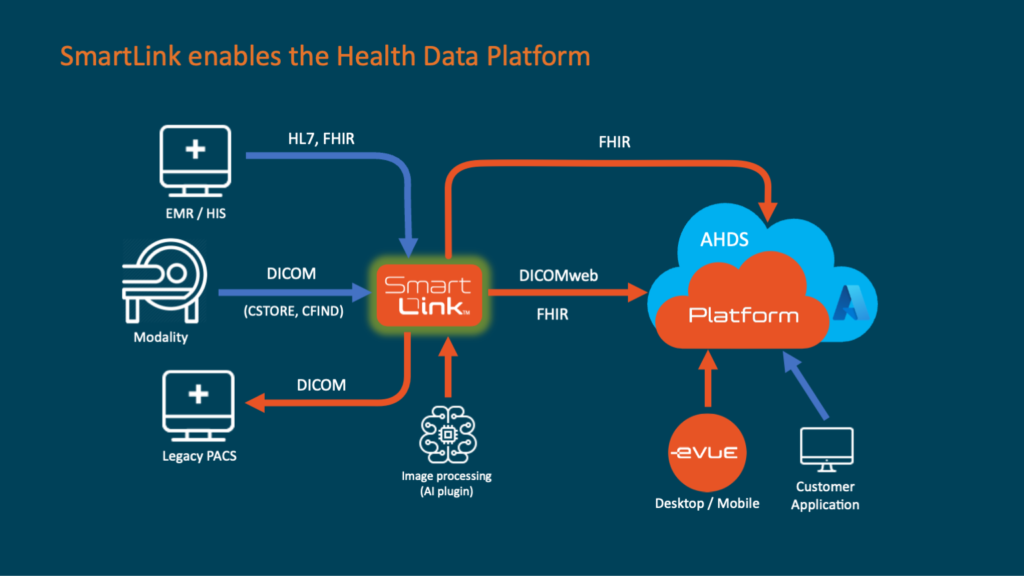
Seven years ago, SmartLinkTM (Patent Pending) was first developed as a fast path for healthcare imaging and HL7/FHIR data to Microsoft Azure with the aspiration of being the full-scale modular solution it is today. To offer a solution capable of handling the problems of seven years ago and continuing to be viable for the foreseeable future, the platform was built to operate natively on the highest prevailing standards at the time, DICOMweb and FHIR.
Knowing that a well-tooled cloud platform offered the most cost-effective and best possible platform for scalability as well as advanced features such as “VPN less” and “share access” capabilities with consent management. Imaging was the first medium chosen because the datasets are heavy and disparate. To adequately service an imaging client, you will ultimately be delving into clinical data and EMR integration, allowing for refinement of imaging conversion workflows, but in tandem, developing integrative clinical data management workflows as well.
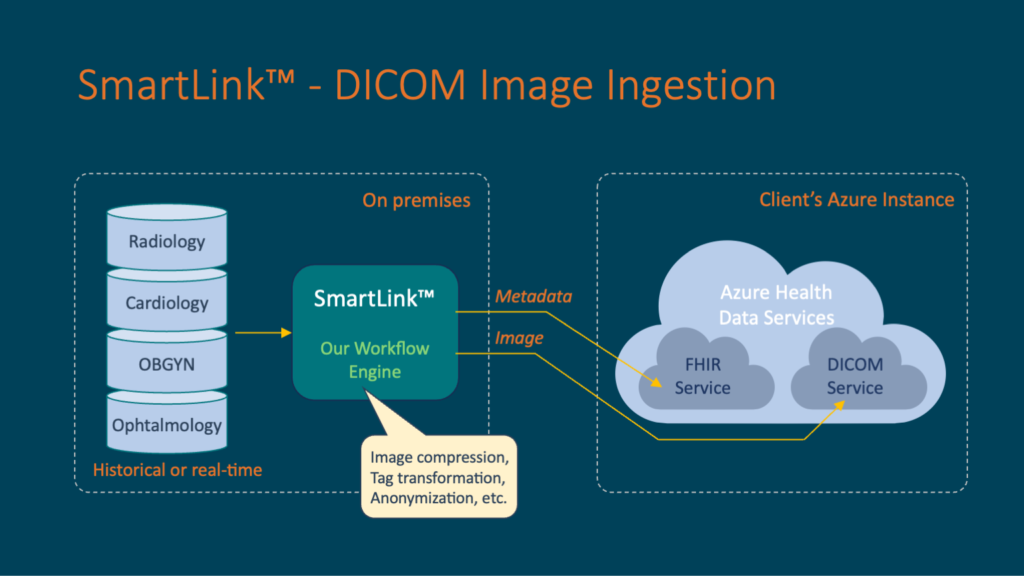
Building the solution was not without its hardships. As with all current non-standardized healthcare data, imaging is no exception. Developing workflows to ingest and convert all DICOM, PNG, and JPEG file formats was a battle of attrition. It ultimately led Efferent to develop the patent-pending modular workflow system built into SmartLinkTM.
SmartLinkTM was developed to provide a simple yet elegant solution. Getting data off-premises and into the cloud and maintaining data integrity while at the same time converting the data into a unified and elastic format. It is an IoT device developed with Microsoft technologies (.NET, IoT Edge, Edge Blob, and SQL Server).
SmartLinkTM has a fully customizable integration workflow (as shown in the figure below) for the secure upload of disparate data to Azure Health Data Services. It supports HL7, non-compliant, FHIR, DICOM, and DICOMweb protocols. It can also be used for the local processing of images (re-coding, anonymization, amendment, etc.) and can relay any message to other systems, in addition to onboard AI and egress AI capabilities.
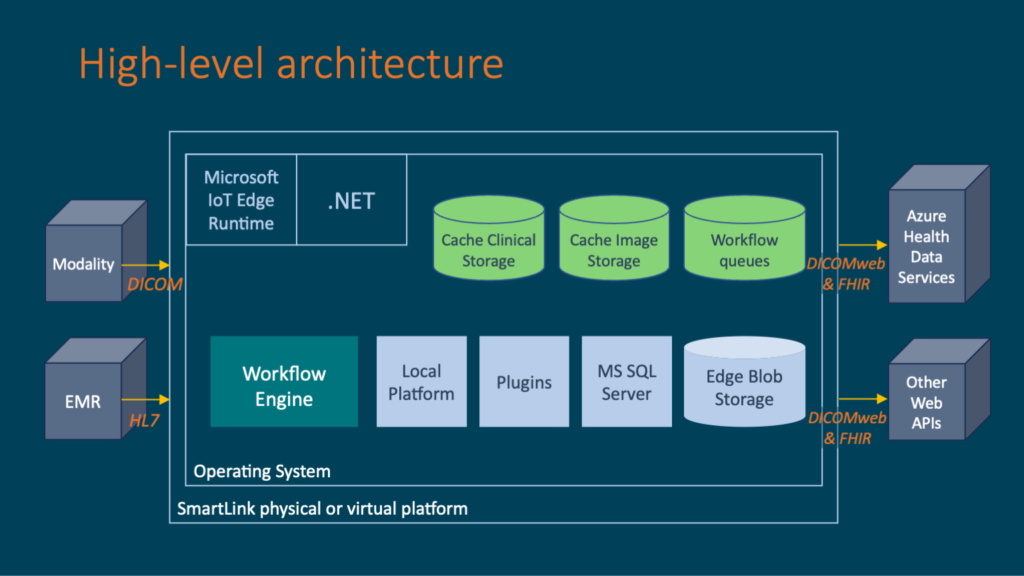
Every variety of DICOM images travels into SmartLinkTM and ultimately down a unique path developed over time to its conversion to DICOMweb. With every problem image or DICOM header, the workflow engine became stronger as we developed the process to overcome the problem of ingesting, converting, and moving that image to the cloud.
With the modular workflow design and experience over the last seven years, SmartLinkTM is uniquely suited to communicate with any potential EHR. A preexisting workflow is simply modified to accept the incoming data and communicate back in kind.
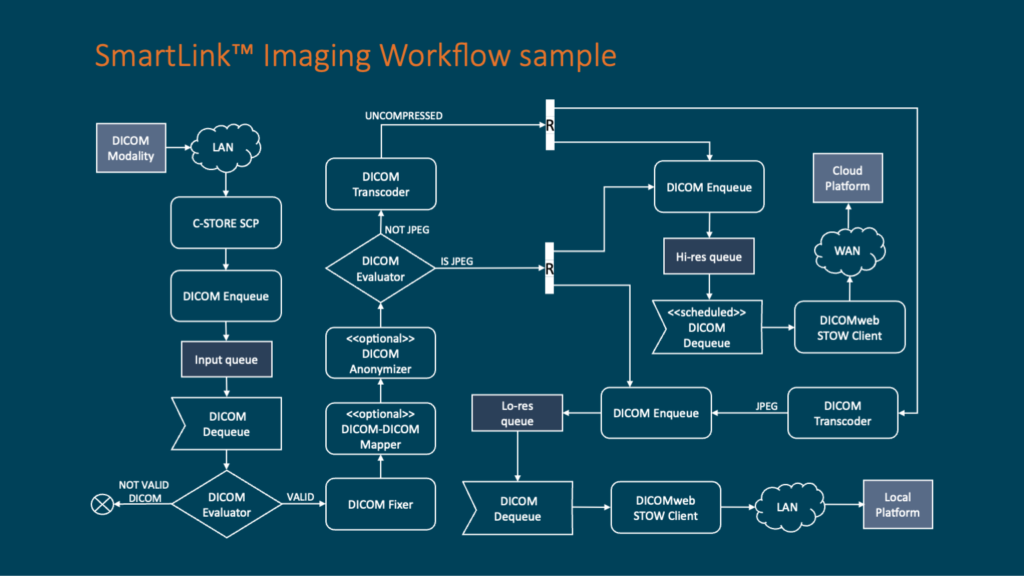
Further going on to develop integrative workflows to support the much-needed “modality worklist” functionality. To allow for a fully integrated cloud solution adept at handling the day-to-day clinical needs of a practice.
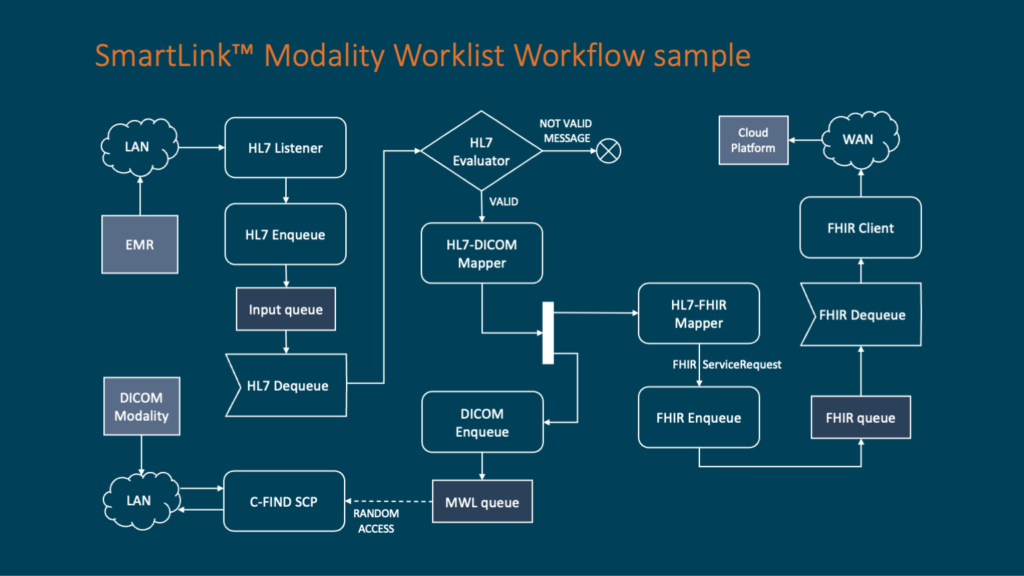
It was with this communication that Efferent was able to use the existing modular workflow process established with imaging and modify activities to complete clinical data conversions to FHIR. Thus, allowing SmartLinkTM to ingest historic clinical data or real-time data directly from the EHR and convert it to FHIR objects.
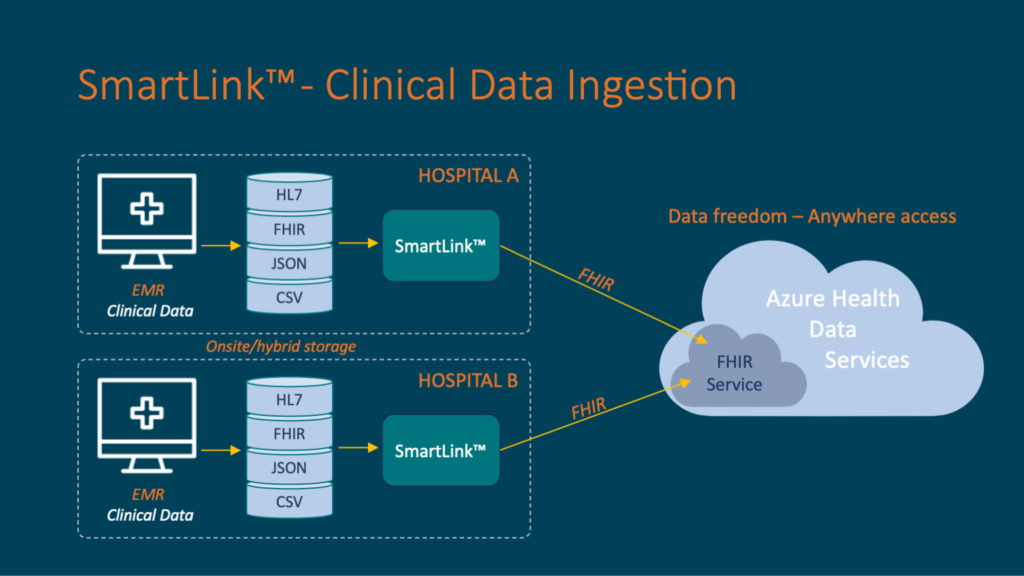
These processes can run solely or concurrently with any image ingestion, QC, or specified unique workflows and can be added upon deployment or updated remotely as needed for an organizational change.
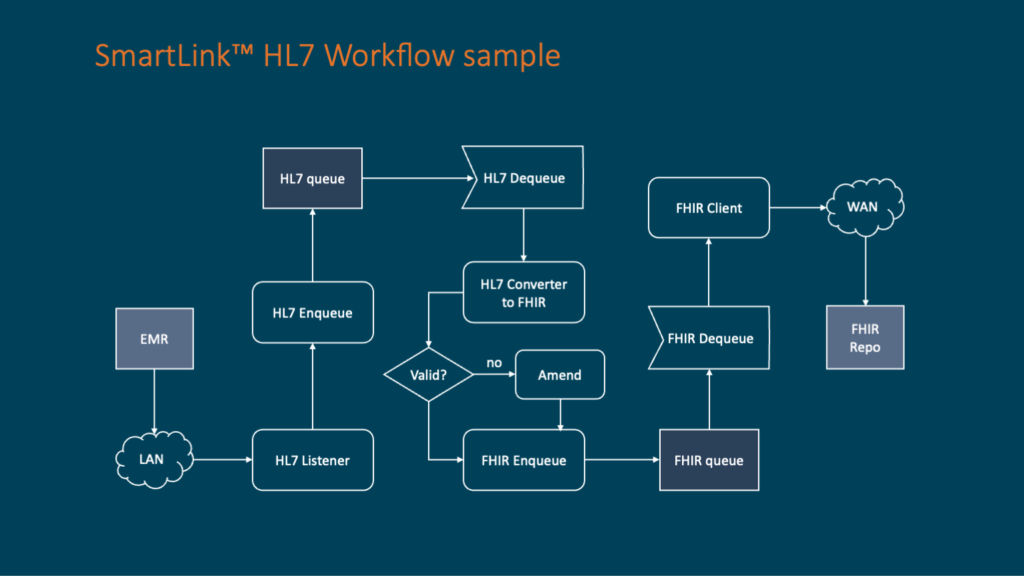
SmartLinkTM handles the first-mile federation and migration to Azure Health Data Services with the feature set depicted below:
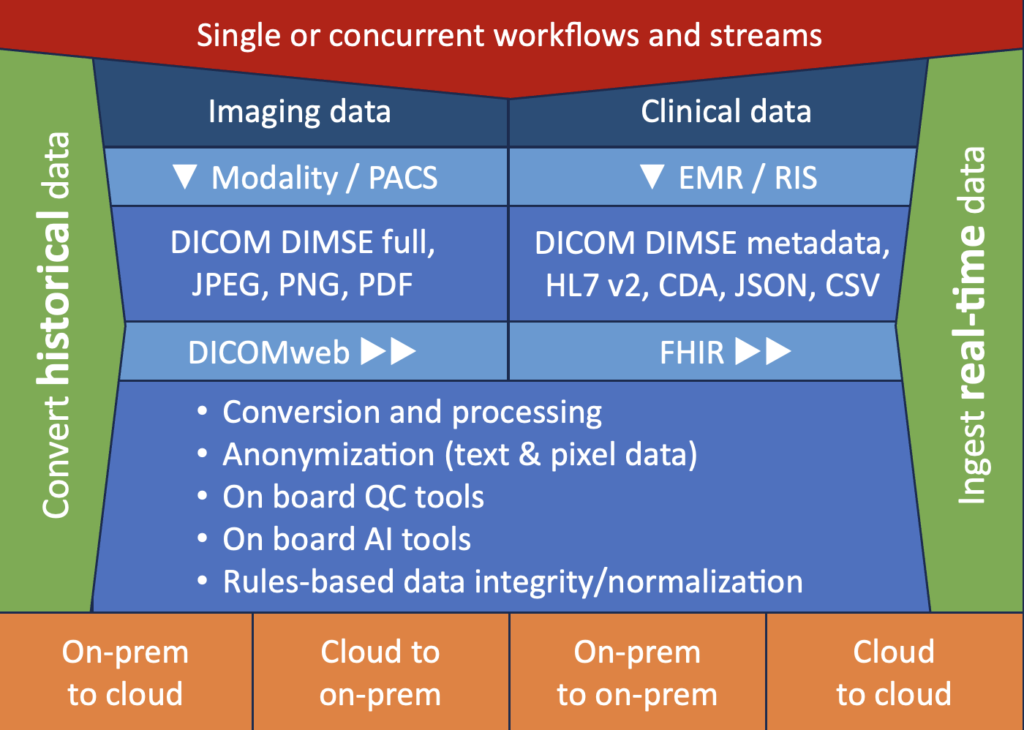
SmartLinkTM enables:
- New starters in medical imaging data management who like to collect their data from an entity or multiple entities to a centralized data warehouse.
- Research Institutions and Academic Medical Centers to create their own research PACS, VNAs, and Enterprise Imaging Center Solutions.
- Vendors who like to build their central data center to create clinical, operational, and patient workflow solutions.
- Customers who would like to unlock their data from existing imaging modalities, PACS, and VNAs.
- Customers who would like to unify their EHR workflow with a single imaging data resource instead of multiple PACS queries.
- Advanced analytics pipeline integration
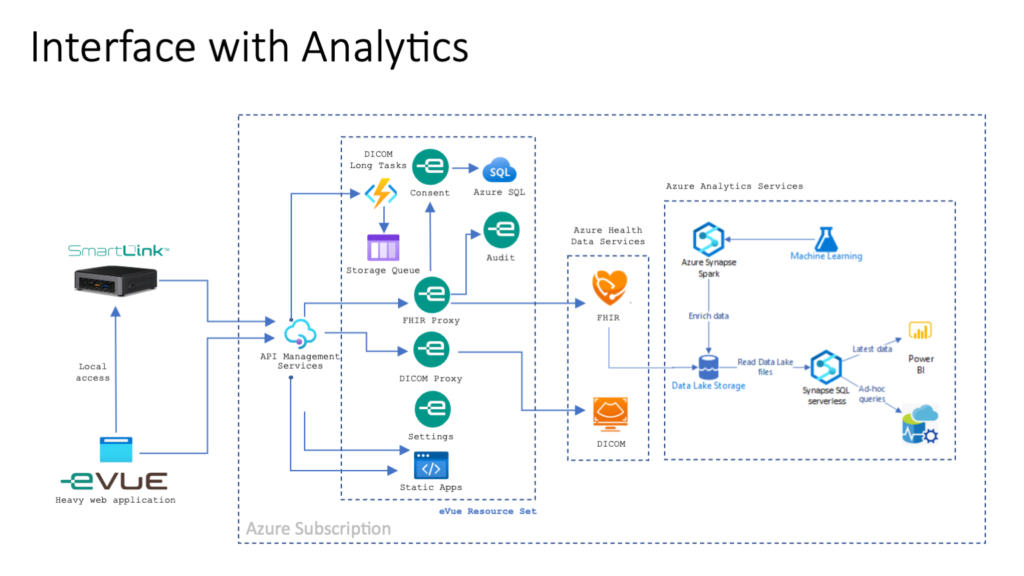
Compliance, Scalability, and Expandability:
- Native Azure infrastructure
- Capabilities to deploy in any Azure Geo (List of Available Regions)
- Ability to ship quickly pre-configured and expanded remotely
- Unlimited expandability and customization
- Remote or user-driven platform management
- Comprehensive compliance coverage for global expansions
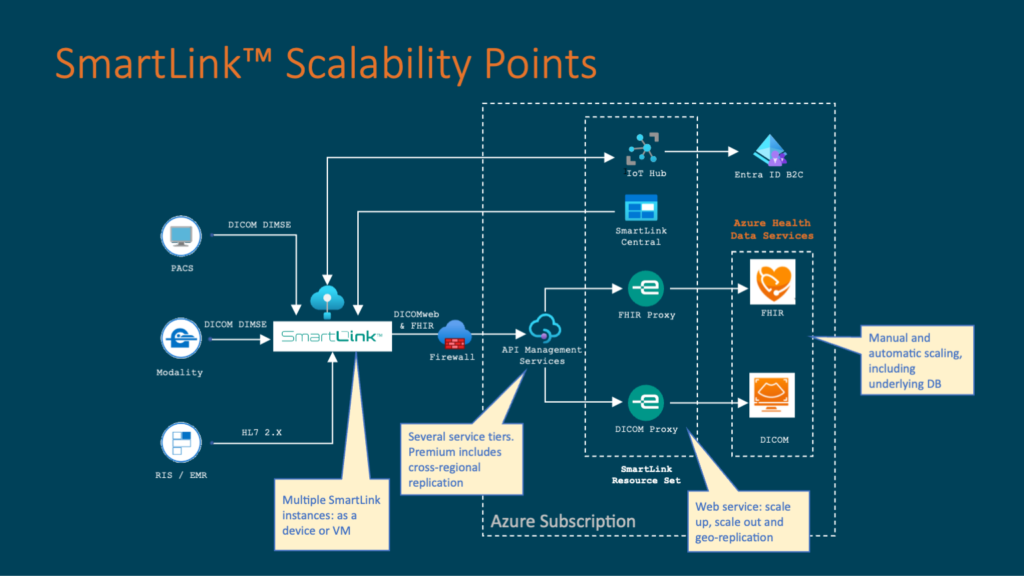
Given SmartLinkTM s design and being built natively on Azure there are four distinct points to scale as the project dictates.

Fig. 11 – Microsoft health data services global footprint
In conclusion, SmartLinkTM can provide a client or hospital system with a valuable tool to accelerate adoption and movement to Microsoft Azure Health Data Services with its core competencies rooted in federating and migrating disparate datasets directly to Azure FHIR and DICOM service, as well as being able to transmit data in a usable format by the Microsoft power platform. SmartLinkTM provides the flexibility to enable the completion of one migration/project or multiple simultaneously and, once installed, can be modified and updated to meet the ever-changing demands of the healthcare industry.